#they represent sunrise midday and sunset respectively
Explore tagged Tumblr posts
Text
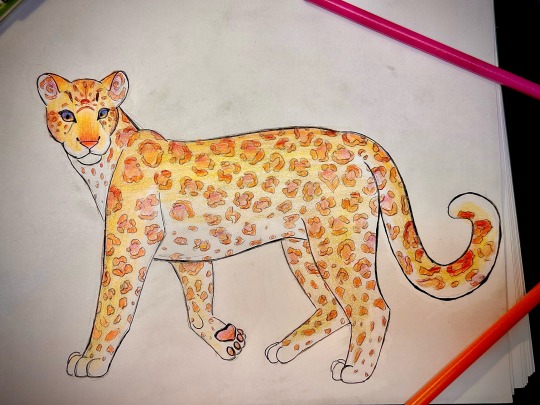
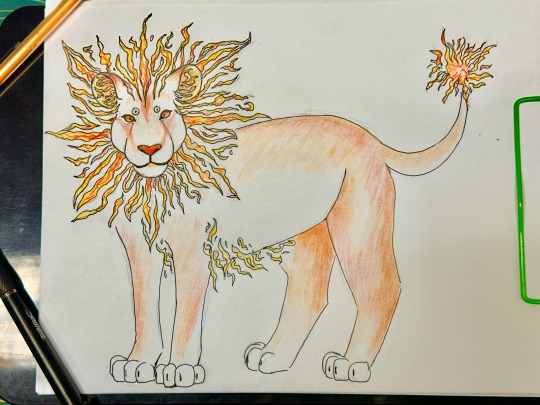
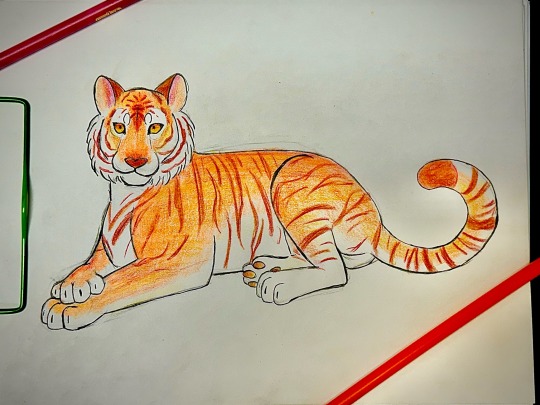
Drew representations of the three unchained sun gods from my dream about the golden peacock trickster! Erythristic animals are so excellent
It was nice to draw again after such a long break ♥️
#my dreams#dream journal#peacock trickster dream#my art#I did these at work so all traditional with colored pencils#they represent sunrise midday and sunset respectively#or the past the present and the future#midday Sun is most wrathful#sunrise is most passive#and sunset is actually the most laid back I think#but they’re all enemies of the trickster#and have killed trickster incarnations in the past#there’s a cyclical thing where the trickster died and the gods cannot move the body#and the chains of the trickster’s tail are eventually used to chain the gods away#and when the trickster is reborn those chains break and the gods are once again free#the trickster is in danger both from the gods whose plans they interfere with#and also from humans who have also killed the trickster before to chain the gods#something something cycles#the trickster is always human first and god second#the three unchained sun gods are gods first and only#goddess of fate is a god first. but perhaps she is going to a human second for the first time#through her newfound alliance with none other than her natural enemy: the trickster - breaker of fate’s chains#lion#tiger#leopard#Sun gods
17 notes
·
View notes
Text
The True Dandelion [theory thread]
!Find the original twitter thread HERE!
Theory aside, I think Strel and Ava are both really good potential candidates of the True Dandelion’s identity. But...

From the beginning, Nomura has been setting up a grand reveal regarding Riku and what he truly is. I believe he may be revealed to be the True Dandelion. We know Nomura loves symbolism, and that he’s really inspired by mythology. Riku is a prime example of that.
Riku is symbolically tied to the following;
Dawn
[The] Sun
Halos
Hearts
Yellow (as well as purple and blue)
Dawn represents;
triumph over darkness
rebirth, regeneration, creation
unconscious into consciousness (awakening...destati?)
illumination and enlightenment
the beginning of salvation
Dawn is associated with;
Aries, The Ram
white horses (especially a chariot pulled by winged horses)
Note for later: Dawn is also connected to lightning/thunderbolts, also known as the celestial fire, which is a symbol of Zeus (Jupiter’s bolts symbolize chance, destiny and providence, said to be forces that will mold the future).
The Sun represents;
life, energy, will, earth and heart
the promise of salvation
the direct son and heir of the god of heaven
the guiding light

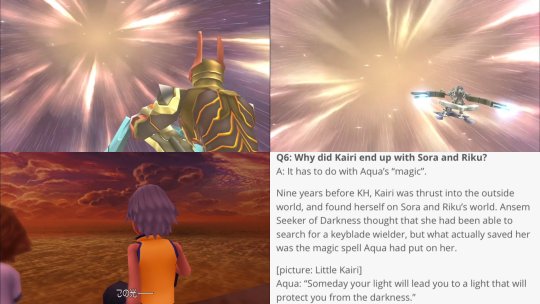
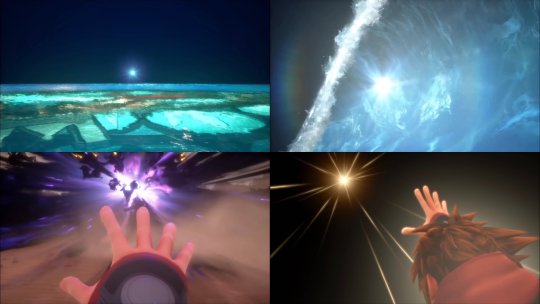
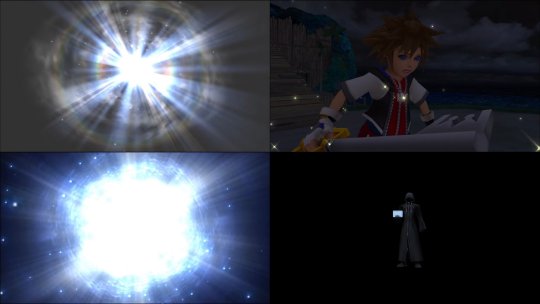
The Sun is associated with;
Apollo, Helios, Baldr and Jesus (sun/light deities in general)
Sun-heroes (Hercules, Siegfried, Mithras, etc.)
royalty
Pride (capital sin - superbia...y'know, what's written on the black box)
gold and yellow
tripods and discs
Apollo is the Greek god of oracles, truth, prophecy, light and the sun.
Helios is the Greek god of and personification of the sun, he is also the guardian of oaths.
Baldr is the Norse god of light, purity and the sun.
Jesus, a figure of Christianity, believed to be the son of god and the messiah (a savior of a group of people).
Halos, also known as solar crowns, aureoles and nimbi/nimbuses, represent;
glory and virtue
supreme power and divine energy
spiritual light and solar powers
eternal life (for those who "conquer" themselves and remain steadfast under trial)
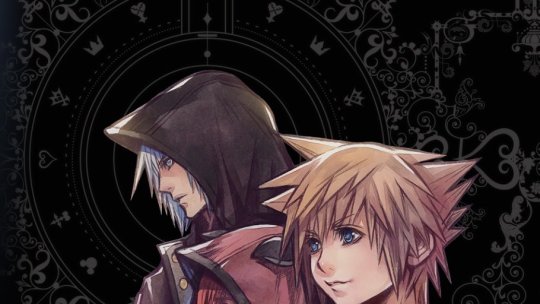
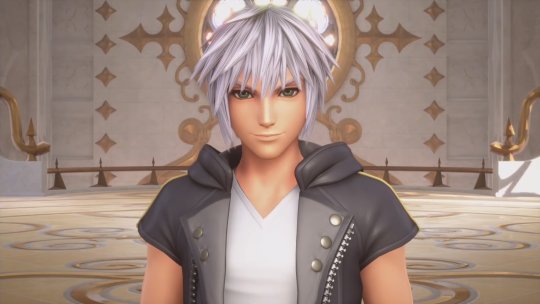
Another note for later: Halos denote holy or sacred figures, rulers, heroes and demigods. They are attributes of Zeus, Apollo, Helios, Dionysus, Sol, Jesus, the Virgin Mary and angels. In ancient Egypt, the solar crown was depicted as a disc framed by the horns of a ram or cow.
Heart represents;
love, love as the center of illumination, the center of being, will, understanding and truth
the sun
Bonus: Sankofa, an African word and symbol, represents the importance of learning from the past in order to build a better future.
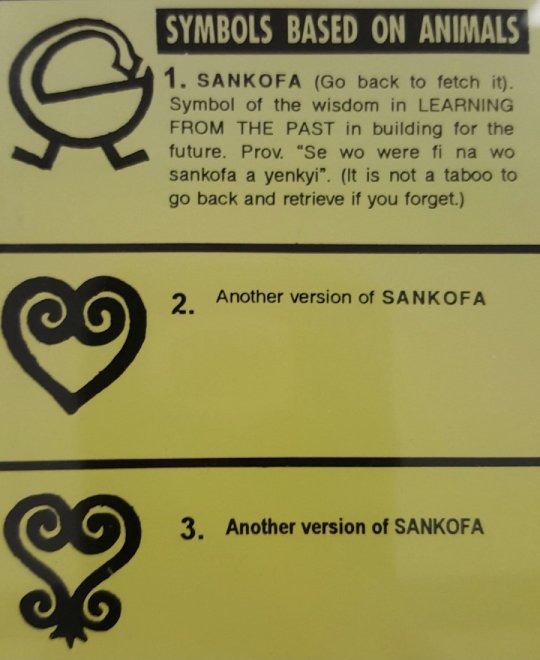
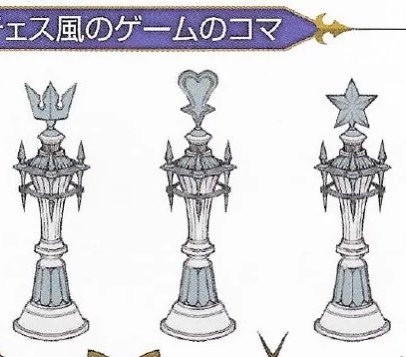
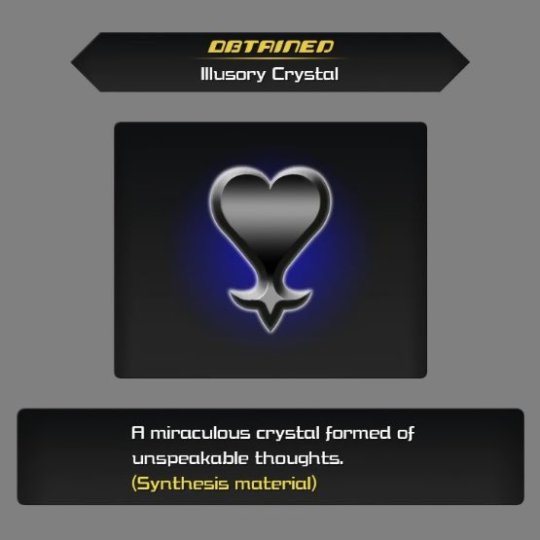

Yellow represents;
dawn, sun, earth, sunlight, illumination
intuition, dissemination and benevolence
jealousy/envy, deceit, betrayal, secrecy, melancholia
Yet another note for later: Yellow is associated with Apollo and Leo, The Lion. It can also denote traitors and heretics.
Purple represents;
royalty, noble birth and sacerdotal power
pride, dignity, justice, truth, sorrow and love
Blue represents;
sanctification, time and space, revelation, eternity, devotion, the unveiling of truth, hope


I brought up the connection between dawn and thunderbolts, as well as Apollo, the sun and tripods. A sacrificial tripod actually appears in Olympus - realm and home of the gods - in kh3, decorated with suns and thunderbolts…it’s where Riku’s heart ends up.
Almost forgot to mention, tripods are a solar symbol associated with heaven. They were sometimes given as prizes… the three legs correspond to sunrise, midday and sunset; future, present and past, respectively.
I also brought up the connection between dawn, the ram (Aries) and Apollo…

The ram represents sacrifice and atonement, the opposite of what a scapegoat represents. End of Pain and No Name reflect this; similar, but in different ways.
The Dandelions were a group of exceptional wielders assembled by Ava, a task granted to her by the Master of Masters. The role of the Dandelions was to maintain the balance by collecting Lux (fragments of light).
With that in mind, the True Dandelion would need to have the same or similar qualities; exceptional abilities, an aversion or resistance to darkness, and a desire to maintain a balance.
Luxu describes the True Dandelion as a “seed of light to be sown into the future.” This light would need to guide the others as a beacon of hope.
Others have pointed out the similarities to when Ventus was wrapped in white cloth and the replica body delivered by Demyx.
However, the scene where Luxu places the True Dandelion in the pod reminded me of how Jesus is depicted as a baby; swaddled in white cloth and placed in a manger.
The Master is looking for wielders with strong hearts, able to trap the darkness without falling to it.
Riku is the only wielder out of the current Guardians that has this ability, which was brought up by YMX in khddd.

This ability of Riku’s was also brought up in coded. He was used as a shield to protect the journal data.
He also became a Dream Eater in order to protect Sora from nightmares.

This ability is framed as natural, instinctive, something second nature to Riku.
So many different symbols that connect to each other. There’s so much set up…both symbolically and throughout the games.
Regardless if he gets revealed to be the True Dandelion or not, Riku definitely isn’t human and is someone incredibly special.

Oh. And there’s a Jesus fish in the Book of Prophecies on the same page as a black crown (Oblivion or Kingdom Key; both connected to Riku).

ICTHUS
Iota - i - “Jesus”
Chi (χ) - ch - “anointed”
Theta - th - “of God”
Upsilon - u - “son”
Sigma - s - “savior”
“Jesus Christ, Son of God, Savior”

23 notes
·
View notes
Text
Bada Bagh: A Peaceful Place of Royal Tombs

Bada Bagh, located just a few kilometers from the bustling city of Jaisalmer, Rajasthan, is a serene and beautiful site known for its royal tombs. This peaceful place is a must-visit for anyone interested in history, architecture, and the rich cultural heritage of Rajasthan. The tranquil atmosphere, combined with the stunning surroundings of the Thar Desert, makes Bada Bagh an ideal location for both relaxation and exploration. To get to Bada Bagh comfortably, consider using the Taxi Service in Jaisalmer offered by Rajasthan Taxi Wala.
The History of Bada Bagh
Bada Bagh, meaning “Big Garden” in Hindi, was built in the 16th century by Maharawal Jai Singh II, the ruler of Jaisalmer. The site serves as a royal cremation ground for the royal family of Jaisalmer. Each tomb, or “chhatri,” is a memorial dedicated to a king or a member of the royal family. The construction of these tombs showcases the grandeur and architectural brilliance of that era, making it a significant historical site.
The tombs are not just structures but also represent the rich history of Jaisalmer. Each tomb has its own unique design and reflects the artistic style of the time. The first tomb built here was of Maharawal Jai Singh II himself, followed by those of his successors and other royal family members. Visiting Bada Bagh provides insight into the royal lineage and the customs surrounding death and remembrance in Rajasthan.
Architectural Features
The architectural style of Bada Bagh is a blend of Rajput and Mughal influences, characterized by intricate carvings and detailed artwork. The chhatris are built using yellow sandstone, which is the same material used for the famous Jaisalmer Fort. This gives the tombs a warm golden hue, especially during sunrise and sunset, creating a breathtaking visual experience.
Each chhatri features beautiful pillars and domes, adorned with exquisite carvings that depict various motifs and designs. The craftsmanship displayed in these tombs is a testament to the skill and artistry of the artisans of that time. Visitors can spend hours admiring the detailed work and learning about the symbolism behind various carvings. To make your exploration easier, you can hire a Jaisalmer Sightseeing Taxi from Rajasthan Taxi Wala to navigate between the tombs and other nearby attractions effortlessly.
The Surrounding Landscape
Bada Bagh is not only significant for its tombs but also for its stunning landscape. The site is surrounded by lush gardens, providing a peaceful escape from the heat and bustle of the city. The gardens are meticulously maintained, making it a lovely spot for a picnic or a quiet stroll.
The backdrop of the Thar Desert adds to the charm of Bada Bagh. Visitors can enjoy the sight of the golden sand dunes, especially during the evening when the setting sun casts a warm glow over the landscape. The serene environment makes it an ideal place for meditation or simply enjoying the beauty of nature. For a smooth travel experience to these picturesque spots, rely on the Taxi Service in Jaisalmer provided by Rajasthan Taxi Wala.
Visiting Bada Bagh
When planning a visit to Bada Bagh, it is best to go early in the morning or late in the afternoon to avoid the harsh midday sun. The site is easily accessible by taxi, and you can book a reliable Jaisalmer Sightseeing Taxi from Rajasthan Taxi Wala to ensure a comfortable journey.
As you enter Bada Bagh, you will be greeted by a peaceful ambiance. There are pathways that lead you through the gardens and tombs, allowing you to explore at your own pace. It is advisable to wear comfortable shoes, as you may want to walk around and enjoy the different tombs.
The Spiritual Significance
Bada Bagh holds not only historical value but also spiritual significance. For the local people, the site is a place of remembrance and respect for the deceased. Visitors often light candles and offer flowers at the tombs as a sign of honor. This practice reflects the deep-rooted traditions and beliefs surrounding life and death in Indian culture.
The peaceful surroundings also make Bada Bagh a place for reflection. Many visitors come here to meditate and connect with their thoughts. The site’s tranquility and natural beauty provide a perfect setting for self-discovery and inner peace. To make your visit even more special, consider booking a Taxi Service in Jaisalmer through Rajasthan Taxi Wala to explore the area at your leisure.
Nearby Attractions
While Bada Bagh itself is a captivating destination, several other attractions are located nearby that visitors may want to explore. The magnificent Jaisalmer Fort, a UNESCO World Heritage site, is just a short drive away. It is one of the largest forts in the world and offers a glimpse into the rich history and culture of Jaisalmer.
Another nearby attraction is the Patwon Ki Haveli, a group of five havelis known for their stunning architecture and intricate carvings. This historic site allows visitors to explore the lifestyle of the wealthy merchants of Jaisalmer.
Additionally, the Sam Sand Dunes, located a little farther away, provide an excellent opportunity for desert adventures. Visitors can enjoy camel rides, sandboarding, and traditional Rajasthani music and dance performances in the evenings. For hassle-free transportation to these attractions, you can book a Jaisalmer Sightseeing Taxi from Rajasthan Taxi Wala.
Tips for Your Visit
Here are a few tips to make the most of your visit to Bada Bagh:
1. Carry Water:
It can get hot, so it’s essential to stay hydrated.
2. Wear Sunscreen:
Protect your skin from the sun, especially if you are visiting during the day.
3. Respect the Site:
As a place of reverence, it’s important to be respectful while exploring the tombs.
4. Bring a Camera:
The beauty of Bada Bagh is worth capturing, so don’t forget your camera or smartphone for photos.
5. Visit Local Markets:
After your visit, explore nearby local markets to experience the vibrant culture of Jaisalmer.
Conclusion
Bada Bagh is truly a peaceful place of royal tombs that offers a unique glimpse into the history and culture of Rajasthan. The stunning architecture, serene environment, and spiritual significance of the site make it a must-visit for anyone traveling to Jaisalmer. Whether you are a history enthusiast, a nature lover, or someone seeking peace and quiet, Bada Bagh will leave you with lasting memories and a deeper appreciation for the rich heritage of India. To enhance your visit and explore this beautiful area, consider using the Taxi Service in Jaisalmer offered by Rajasthan Taxi Wala. Enjoy all that Bada Bagh and Jaisalmer have to offer, and make your journey unforgettable!
0 notes
Photo



RA
Credits to TheFearMaster for this amazing piece of art
Original Picture link https://www.deviantart.com/thefearmaster/art/Egyptian-Birb-of-Spicy-Sky-Cookie-747911567
Myth & Description
Ra (/rɑː/; Egyptian: Rꜥ, Rˤ) or Re (/reɪ/; Coptic: ⲣⲏ, Rē) is the ancient Egyptian sun god. By the Fifth Dynasty in the 25th and 24th centuries BC, he had become a major god in ancient Egyptian religion, identified primarily with the noon sun.
In later Egyptian mythology dynastic times, Ra was merged with the god Horus, as Ra-Horakhty ("Ra, who is Hor of the Two Horizons"). He was believed to rule in all parts of the created world: The sky, the earth and the underworld. He was associated with the falcon or hawk. When in the New Kingdom and the god Amun rose to prominence, he was fused with Ra as Amun-Ra. During the Amarna Period, Akhenaten suppressed the cult of Ra in favor of another solar deity, the Aten, the deified solar disc, but after the death of Akhenaten, the cult of Ra was restored.
The cult of the Merwer bull, an embodiment of Ra, had its center in Heliopolis and there was a formal burial ground for the sacrificed bulls north of the city.
All forms of life were believed to have been created by Ra, who called each of them into existence by speaking their secret names. Alternatively man was created from Ra's tears and sweat, hence the Egyptians call themselves the "Cattle of Ra." In the myth of the Celestial Cow it is recounted how mankind plotted against Ra and how he sent his eye as the goddess Sekhmet to punish them. When she became bloodthirsty she was pacified by drinking beer mixed with red dye.
Ra and the sun
To the Egyptians, the sun represented light, warmth, and growth. This made the sun deity very important, as the sun was seen as the ruler of all that he created. The sun disk was either seen as the body or eye of Ra. Ra was the father of Shu and Tefnut, whom he created. Shu was the god of the wind, and Tefnut was the goddess of the rain. Sekhmet was the Eye of Ra and was created by the fire in Ra's eye. She was a violent lioness.
Ra in the underworld
Ra was thought to travel on the Atet, two solar barks called the Mandjet (the Boat of Millions of Years) or morning boat and the Mesektet or evening boat. These boats took him on his journey through the sky and the Duat, the literal underworld of Egypt. While Ra was on the Mesektet, he was in his ram-headed form. When Ra traveled in his sun boat, he was accompanied by various other deities including Sia (perception) and Hu (command), as well as Heka (magic power). Sometimes, members of the Ennead helped him on his journey, including Set, who overcame the serpent Apep, and Mehen, who defended against the monsters of the underworld. When Ra was in the underworld, he would visit all of his various forms. Apep, the god of chaos, was an enormous serpent who attempted to stop the sun boat's journey every night by consuming it or by stopping it in its tracks with a hypnotic stare. During the evening, the Egyptians believed that Ra set as Atum or in the form of a ram. The night boat would carry him through the underworld and back towards the east in preparation for his rebirth. These myths of Ra represented the sun rising as the rebirth of the sun by the sky goddess Nut; thus attributing the concept of rebirth and renewal to Ra and strengthening his role as a creator god as well.
When Ra was in the underworld, he merged with Osiris, the god of the dead, and through it became the god of the dead as well.
Ra as creator
Ra was worshiped as the creator god among some ancient Egyptians, specifically followers of his cult at Heliopolis. It was believed that Ra wept, and from his tears came man. These cult-followers believed that Ra was self-created, while followers of Ptah believed that Ra was created by Ptah. In a passage of the Book of the Dead, Ra cuts himself, and his blood transforms into two intellectual personifications: Hu, or authority, and Sia, or mind. Ra is also accredited with the creation of the seasons, months, plants, and animals.
Iconography
Ra was represented in a variety of forms. The most usual form was a man with the head of a falcon and a solar disk on top and a coiled serpent around the disk. Other common forms are a man with the head of a beetle (in his form as Khepri), or a man with the head of a ram. Ra was also pictured as a full-bodied ram, beetle, phoenix, heron, serpent, bull, cat, or lion, among others.
He was most commonly featured with a ram's head in the Underworld. In this form, Ra is described as being the "ram of the west" or "ram in charge of his harem“.
In some literature, Ra is described as an aging king with golden flesh, silver bones, and hair of lapis lazuli.
Worship
The chief cult center of Ra was Iunu, the "Place of Pillars", later known to the Greeks as Heliopolis (lit. "Sun City") and today located in the suburbs of Cairo. He was identified with the local sun god Atum. As Atum or Atum-Ra, he was reckoned the first being and the originator of the Ennead ("The Nine"), consisting of Shu and Tefnut, Geb and Nut, Osiris, Set, Isis and Nephthys. The holiday of 'The Receiving of Ra' was celebrated on May 26 in the Gregorian calendar.
His local cult began to grow from roughly the second dynasty, establishing Ra as a sun deity. By the Fourth Dynasty, pharaohs were seen as Ra's manifestations on earth, referred to as "Sons of Ra". His worship increased massively in the Fifth Dynasty, when Ra became a state deity and pharaohs had specially aligned pyramids, obelisks, and solar temples built in his honor. The rulers of the Fifth Dynasty told their followers that they were sons of Ra himself and the wife of the high priest of Heliopolis. These pharaohs spent most of Egypt's money on sun temples. The first Pyramid Texts began to arise, giving Ra more and more significance in the journey of the pharaoh through the Underworld.
During the Middle Kingdom era, Ra was increasingly affiliated and combined with other chief deities, especially Amun and Osiris.
At the time of the New Kingdom, the worship of Ra had become more complicated and grander. The walls of tombs were dedicated to extremely detailed texts that depicted Ra's journey through the underworld. Ra was said to carry the prayers and blessings of the living with the souls of the dead on the sun boat. The idea that Ra aged with the sun became more popular during the rise of the New Kingdom.
Many acts of worship included hymns, prayers, and spells to help Ra and the sun boat overcome Apep.
The rise of Christianity in the Roman Empire put an end to the worship of Ra by the citizens of Egypt, and as Ra's popularity suddenly died out, the study of Ra became of purely academic interest even among the Egyptian priests.
Powers
Creation
Enhanced Charisma
Fire Manipulation
Fire Body
Omnipotence (As Aten)
Nigh Omnipotence (As creator deity)
Primordial Light Manipulation
Solar Manipulation
Light Manipulation
Relationship to other gods
Gods merged with Ra
As with most widely worshiped Egyptian deities, Ra's identity was often combined with other gods, forming an interconnection between deities.
Amun and Amun-Ra
Amun was a member of the Ogdoad, representing creation energies with Amunet, a very early patron of Thebes. He was believed to create via breath, and thus was identified with the wind rather than the sun. As the cults of Amun and Ra became increasingly popular in Upper and Lower Egypt respectively they were combined to create Amun-Ra, a solar creator god. It is hard to distinguish exactly when this combination happened, but references to Amun-Ra appeared in pyramid texts as early as the fifth dynasty. The most common belief is that Amun-Ra was invented as a new state deity by the Theban rulers of the New Kingdom to unite worshipers of Amun with the older cult of Ra around the 18th dynasty. Amun-Ra was given the official title "king of the gods" by worshipers, and images show the combined deity as a red-eyed man with a lion's head that had a surrounding solar disk.
Atum and Atum-Ra
Atum-Ra (or Ra-Atum) was another composite deity formed from two completely separate deities, however Ra shared more similarities with Atum than with Amun. Atum was more closely linked with the sun, and was also a creator god of the Ennead. Both Ra and Atum were regarded as the father of the deities and pharaohs, and were widely worshiped. In older myths, Atum was the creator of Tefnut and Shu, and he was born from ocean Nun.
Ra-Horakhty
In later Egyptian mythology, Ra-Horakhty was more of a title or manifestation than a composite deity. It translates as "Ra (who is) Horus of the Horizons". It was intended to link Horakhty (as a sunrise-oriented aspect of Horus) to Ra. It has been suggested that Ra-Horakhty simply refers to the sun's journey from horizon to horizon as Ra, or that it means to show Ra as a symbolic deity of hope and rebirth. (See earlier section: Ra and the sun).
Khepri and Khnum
Khepri was a scarab beetle who rolled up the sun in the mornings, and was sometimes seen as the morning manifestation of Ra. Similarly, the ram-headed god Khnum was also seen as the evening manifestation of Ra. The idea of different deities (or different aspects of Ra) ruling over different times of the day was fairly common, but variable. With Khepri and Khnum taking precedence over sunrise and sunset, Ra often was the representation of midday when the sun reached its peak at noon. Sometimes different aspects of Hor were used instead of Ra's aspects.
Raet-Tawy
Raet or Raet-Tawy was a female aspect of Ra; she did not have much of importance independently of him. In some myths she was considered to be either Ra's wife or his daughter.
Gods created by Ra Bastet
Bastet (also called Bast) is sometimes known as the "cat of Ra". She is also his daughter and is associated with Ra's instrument of vengeance, the sun-god's eye. Bastet is known for decapitating the serpent Apep (Ra's sworn enemy and the "God" of Chaos) to protect Ra. In one myth, Ra sent Bastet as a lioness to Nubia.
Sekhmet
Sekhmet is another daughter of Ra. Sekhmet was depicted as a lioness or large cat, and was an "eye of Ra", or an instrument of the sun god's vengeance. In one myth, Sekhmet was so filled with rage that Ra was forced to turn her into a cow so that she would not cause unnecessary harm. In another myth, Ra fears that mankind is plotting against him and sends Hathor (another daughter of Ra) to exterminate the human race. In the morning Sekhmet goes to finish the job and drinks what appears to be blood. It turns out to be red beer, and she is too intoxicated to finish the slaughter.
Hathor
Hathor is another daughter of Ra. When Ra feared that mankind was plotting against him, he sent Hathor as an "eye of Ra" to exterminate the human race, later sending Sekhmet to finish the job. In one myth, Hathor danced naked in front of Ra until he laughed to cure him of a fit of sulking. When Ra was without Hathor, he fell into a state of deep depression.
Rival gods Ptah
Ptah is rarely mentioned in the literature of Old Kingdom pyramids. This is believed by some to be a result of the Ra-worshiping people of Heliopolis being the main writers of these inscriptions. Followers of Ra were known to be jealous of Ptah. While some believed that Ra is self-created, others believed that Ptah created him.
Isis
Isis frequently schemed against Ra, as she wanted her son Horus to have the power. In one myth, Isis created a serpent to poison Ra and only gave him the antidote when he revealed his true name to her. Ra now feared Isis, as with his secret name revealed she could use all her power against him and have Horus take over the throne.
Apep
Apep, also called Apophis, was the god of chaos and Ra's greatest enemy. He was said to lie just below the horizon line, trying to devour Ra as Ra descended into the underworld. As he swallowed Ra, this led to the setting of the sun and when he had completely swallowed Ra this led to nighttime. He never succeeded in completely swallowing Ra however as he eventually spit Ra back out, causing the sun to rise.
#aether#aquatic#arthropods#bears#birds#boars#bovines#canines#cave#creature#dead#deam#deer#earth#equines#evileye#eye#evil#fable#fantasy#felines#fish#folklore#genie#gold#gif#grim#haunted#heaven#hell
22 notes
·
View notes
Photo

ACCEPTED // SABLE OSWALD
district 10 → mentor → Meghan Ory fc → she/her
three strengths: pragmatic, protective, hard-working three weaknesses: stubborn, blunt, and cynical
tw death, gore, animal death, rape
Arena: For the 59th games, tributes rise up into a flat, grassy field surrounded by forests. There is no breeze, no clouds in the sky, no sounds of nature. Here at the cornucopia, with it’s piles of weapons and food, there is only the sun above. To the north tributes can spot snow covered mountains but nothing else is immediately apparent. The arena is laid out in four quadrants with each one representing on of the four seasons. North of the cornucopia is winter. Past the forests the land curves upward and the temperature drops drastically. This is harsh landscape prone to avalanches and with little edible food. Nightfall without a fire will lead to frostbite and probably death. Some caves can be taken to for refuge but mutts may wait inside. To the south of the cornucopia the trees thin out and the temperature rises. Travel far enough and tributes will find themselves caught in an arid landscape with no water in sight. Poisonous scorpion mutts patrol the landscape, their sting leading to hallucinations and a painful death. The tributes find more hospitable landscapes to the east and west. To the east, there are vast meadows and plentiful collections of fruits and wildlife. The land is flourishing and the rain that falls is gentle. Relax too long however and a tribute might find themselves drifting into unwanted sleep. To the west, the forest thickens and leaves turn vibrant colors of orange, red, and yellow. Thick groves of apple trees and streams bubble throughout. Wolves mutts patrol at night however and will fall upon the unsuspecting tributes. Biography: The first lesson was held place in a slaughterhouse with a bolt gun in her hand and the eyes of a full grown bull staring her down. Sable was the eldest of three daughters born to Yara and Corbin Oswald. While her father worked with the pigs from sunrise to sunset, her mother worked as a butcher. This was her lesson: there are crueler things than death. This act was simple. It was quick, it was painless, and it was considerate. Suffering was for the living. The luxury of a childhood was not afforded to many in district ten. Growing up Sable shared her room, her bed, and her clothes with her sisters. Mornings were spent attending to household chores, middays to studies, afternoons to the market where they could barter trinkets for bread, and evenings to the dinner table. Sable was a responsible and pragmatic child that did not dream of a better life. She had a mind for numbers and sponged up what little education she was afforded. She looked out for her younger siblings, and did not complain over the extra work. It was in her nature to be protective and she found herself occasionally on the bad side of a peacekeeper’s whip for daring to step between them and an offender. As her mother would wash the wounds she’d remind her whose finger was on the trigger in that situation. She was happiest in the evenings when her father might strick up a few chords, or her sister might whistle a tune. The music helped distract her from the hunger of a meal skipped, or the ache of her muscles. It was in those hours, her mother’s face lit by candelight that she’d catch a smile or a softening. As a young girl she made friends with a rancher’s son named Colton Hargreeves. He would be the only man she met who made her want to be less sensible. While Colt was of a much higher social standing in district ten, he didn’t seem to mind. They were sweet on each other, naturally progressing into a couple as they aged. Sable didn’t often let her contemplate a future, but at fourteen she thought she could be very happy if the only person she ever fell in love with was Colt. The next year, her name came out of the reaping bowl. By that age, she was a lanky and underfed teenager. Her district partner was eighteen, a scowl on his face and eyes that looked past her when they shook hands. She committed the faces to memory; Her mother’s wobbling chin, her father’s tears, Darcy’s fear, and Eve’s anger. Each she would take with her to the capitol. From Colt she took a beaten bit of horshoe, attached to a bit of leather string, with his initials on it. It would be her token in the arena. The capitol had little particular interest in Sable. After five baths, a haircut, and several layers of make-up they remarked that she cleaned up nicely. She had no talent for inspiration, or any stomach for the performance that others put on. She took to the training stations, focusing on survival skills and self-defense and garnering a modest score of seven. Throughout the weekly pre-game events however, she did garner some respect from her district partner, Orson. They made a pact to stick together, and with a little discussion recruited the pair from seven to join them. Throughout it all, Sable didn’t let herself hope that she might survive. She only wished for a merciful ending. Working as a unit the four tributes were able to snatch a backpack and several knives from the cornucopia during the bloodbath. The district seven boy took a beating from one of the careers, but was rescued by Orson. They retreated to the west afterward and into the autumn segment of the arena. Nights were cold and that first night the wolf mutts stalking the forests attacked them and took down the boy from seven. Sable was knocked down and sustained a bite to her shoulder that would scar in the years to come, but she managed to climb her way to safety. They trekked north after that coming two nights later to the foot of the northern mountains. After making camp in a tree, the girl from seven decided to take first watch. Sable woke that night with the girl’s hands around her throat. She’d thought to dispose of both her alliance partners in one go, but Sable managed to use her nails to claw at the girl’s face. In pain the grip loosened and Sable was able to escape into the mountainscape. She was alone after that and surprised when Orson’s face didn’t appears in the sky. She made her way south after a night in the mountains resulted in some frostbite to her fingertips. Along the way she skirted the edges of the cornucopia and kept herself hidden. Four nights passed, then six. On the ninth, feverish from an infection to her bite, her first gift came. Some antibioitics and water to keep her moving out of the summer landscape. The careers were all taken out on the seventh day, buried in an avalanche and the victims to their own ambitious hunting schemes. With them gone attention swung to the quieter tributes, the ones that had seemed like long shots, or had been wise enough to keep targets off their backs. Sable was a bit of both and she knew enough of herself to understand she was capable of killing. By the twelfth night, four tributes remained. Her, Orson, the girl from seven, and the boy from three. The gamemakers broadcast the locations of all the tributes every hour during those last days. Sable let herself sleep only for snatches at a time. She was ravenous and exhausted but stubborn. She found her way into the spring segment of the arena and there found Orson a victim of the sleeping pollen. He slept peacefully with his hands folded over his stomach. She’d sought him out and hoped to arrive before either of the remaining tributes. With throwing knife she’d managed to wrestle away, she slit Orson’s throat. It was quick, it was painless, and it was merciful. The girl from seven took care of the boy from three and then the gamemaker’s pushed the two together. While a thunderstorm worked it way across the sky they fought it out. It was bloody and it was sloppy. Sable took several stab wounds that would require surgery to repair. She woudl have bled out in the rain had her opponent not gotten a little cocky. Her blood was on the girl’s hands when she leaned backward and laughed. She was but bones and skin and thought the pain was everything, she grassped a blunt bit of rock and smashed it against the girl’s forehead. She hit again and again and stopped only when the cannon sounded. She was conscious only to hear the words “Ladies -” and then gave herself up to blessed darkness. Her scars would last forever but as a nurse pointed out ‘we’re glad you’re pretty little face wasn’t so banged up.’ She wasn’t an anticipated victor but the capitol took what they could and made it their own. She was to be the ruthless, no-nonsense killer, the great stratageist, and the girl who fought to return to her sweetheart at home. Back at home, a cold reception was waiting for her. While Colt and her family welcomed her with open arms there were others who would not so much as look at her. Orson’s killing would haunt Sable for the rest of her life. Often she woke with her hand against her throat, imagining the injury. She’d killed him while he slept, a dishonorable murder. (None much cared to hear that no murder, no minute, no second even in the arena gave space for honor.) Sable’s popularity rised as she aged. As a victor she was fed properly for once and grew into a beautiful young woman. When the time came, Snow began to sell her off to sponsors. There was no hiding this from Colt. He grew more restless with every injustice, more incendiary toward Snow and the capitol. She was more reserved, colder, and less given to laughter but their relationship survived. They were married at twenty in a small ceremony in the victor’s village, and yet none of that disuaded the sponsors. She kept her toe in line with the capitol in order to protect her family, but her sister was of a more restless stock. Eve’s treasonous words were incindiary and she never listened to warnings. Colton was quieter in his hatred, but no less passionate. The 68th games brought a victory to District Ten again, but Sable arrived home to an empty home and a single white rose. Eve Oswald and Colton Hargreeves were too closesly tied to a victor to be dealt with publicly. So instead they simply disappeared. Sable knew what was likely. A bullet to the brain and a shallow grave. It was better than the other options, less suffering. She was consumed by grief, but she dug herself out because she was pregnant. Her son, named Leo Oswald, became the center of her little world. She would do anything in her power to protect him and for him she kept herself quiet and did not provoke the capitol.
PLAYED BY // KATIE
2 notes
·
View notes